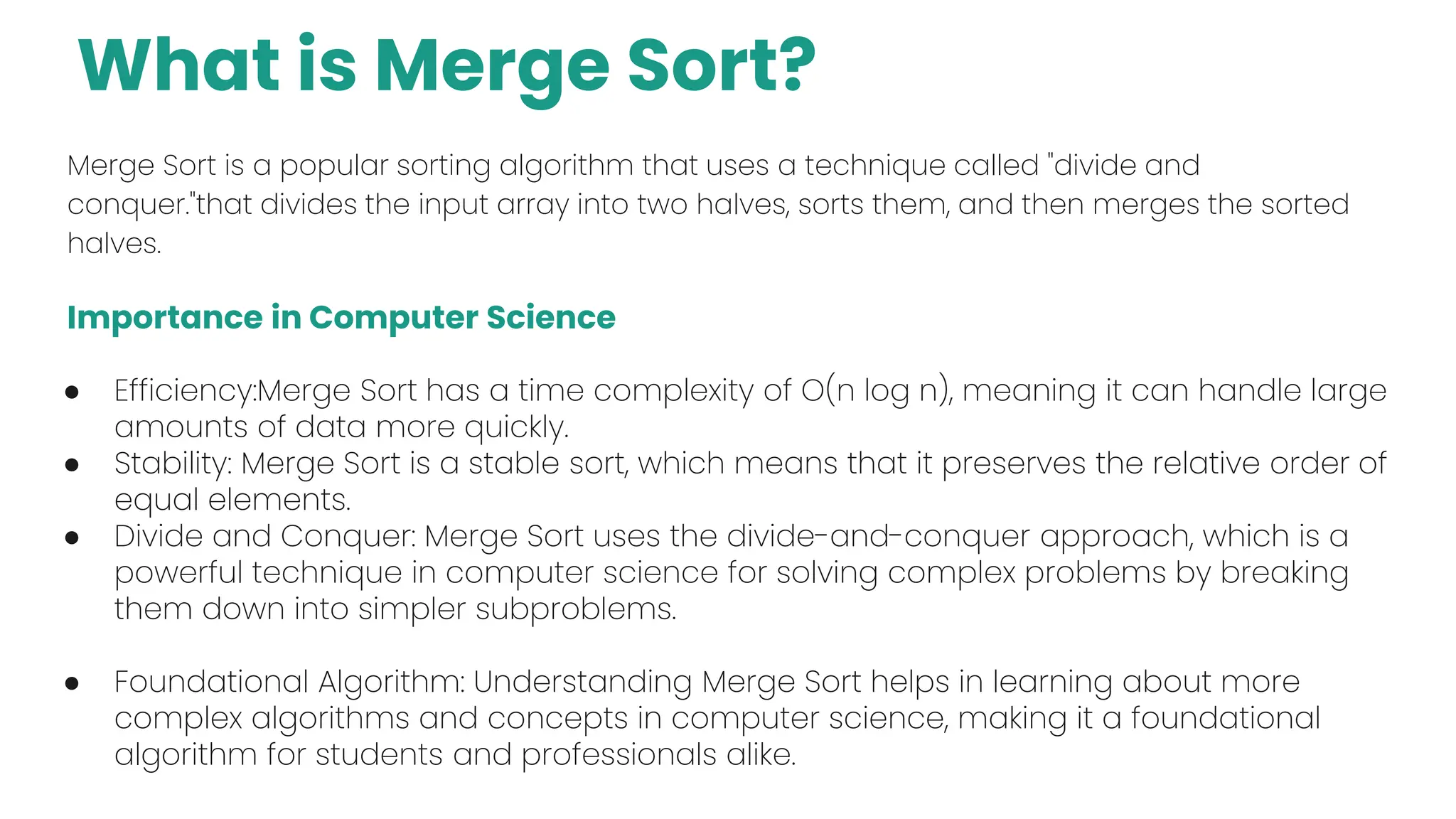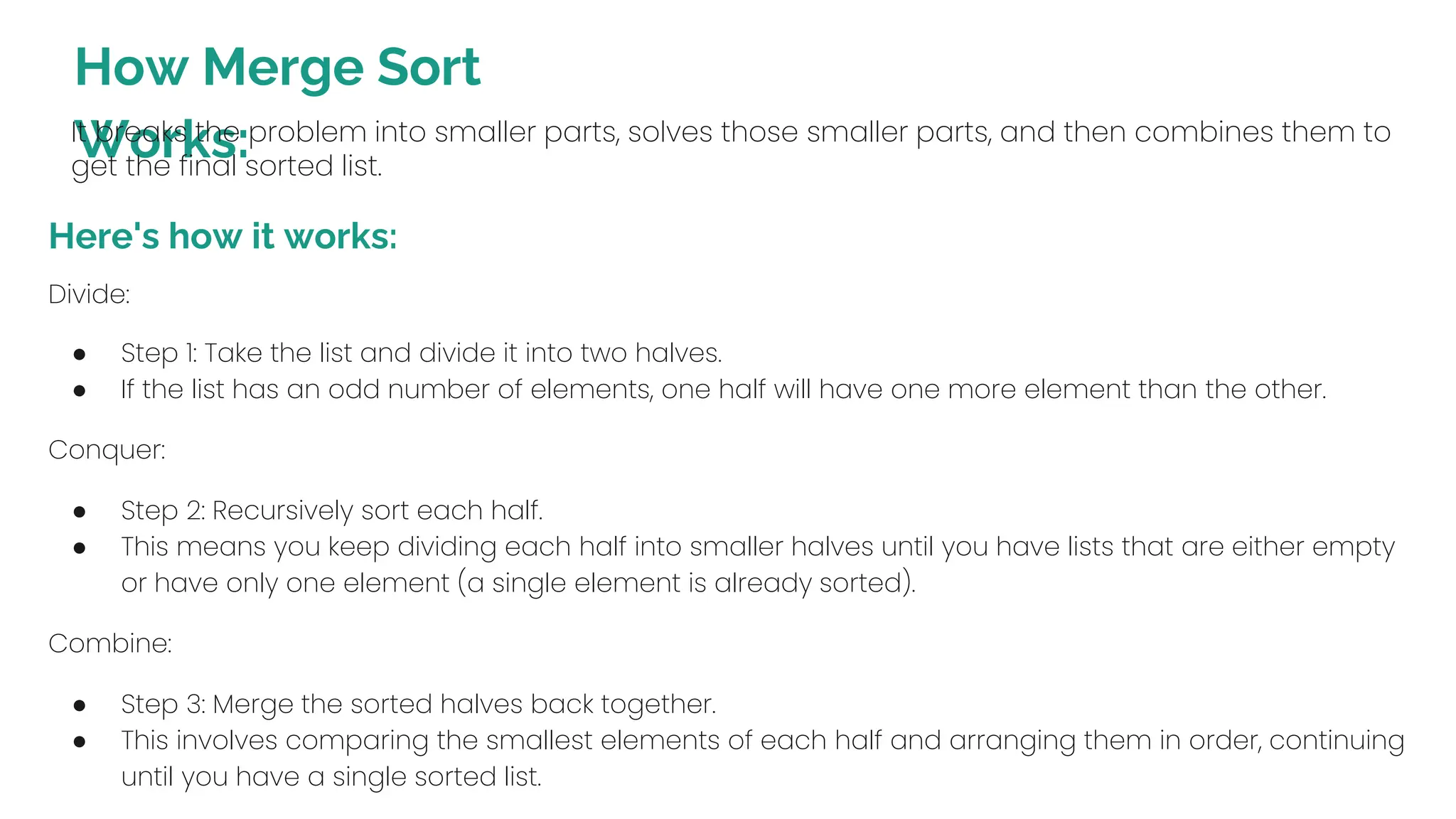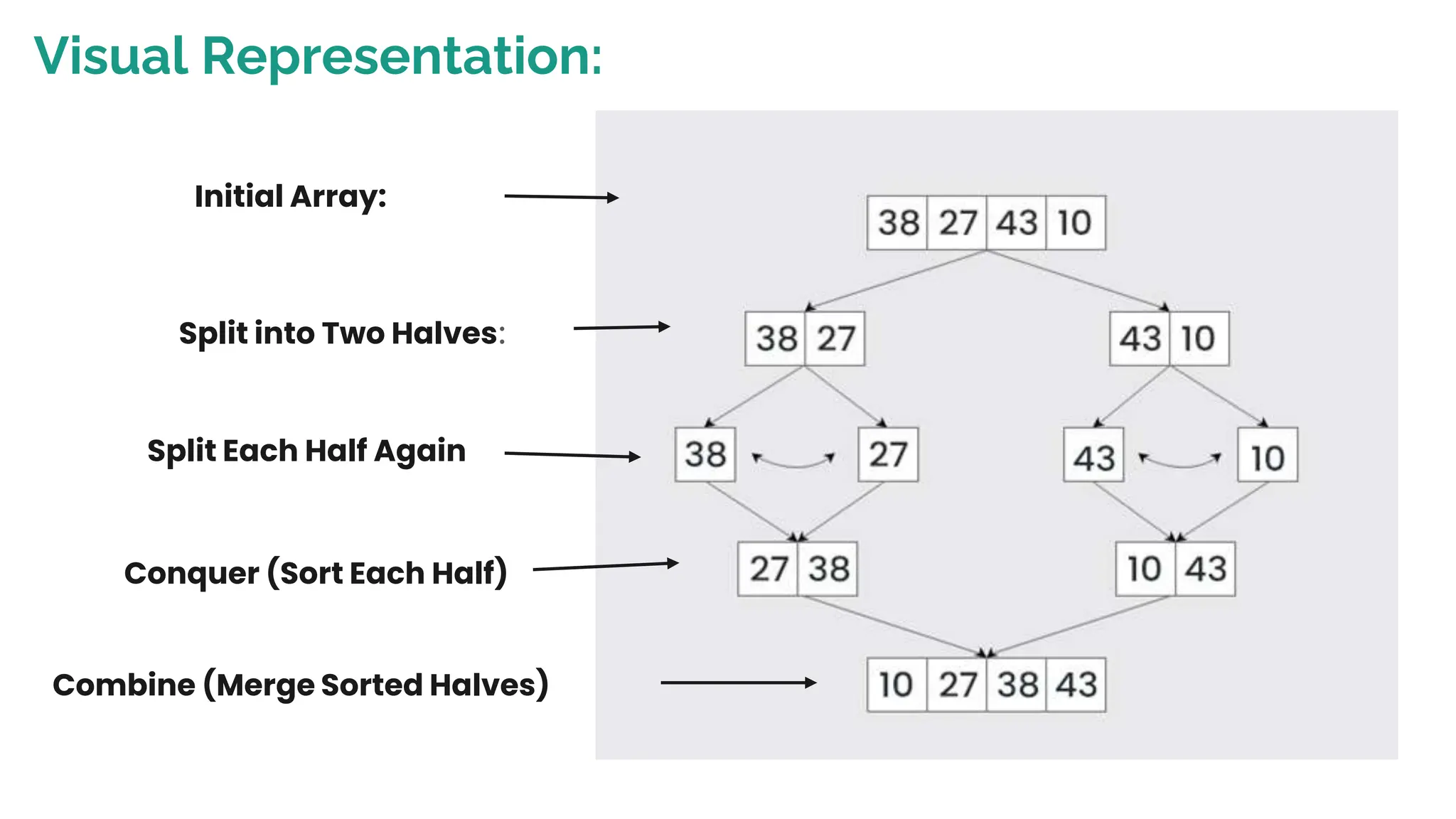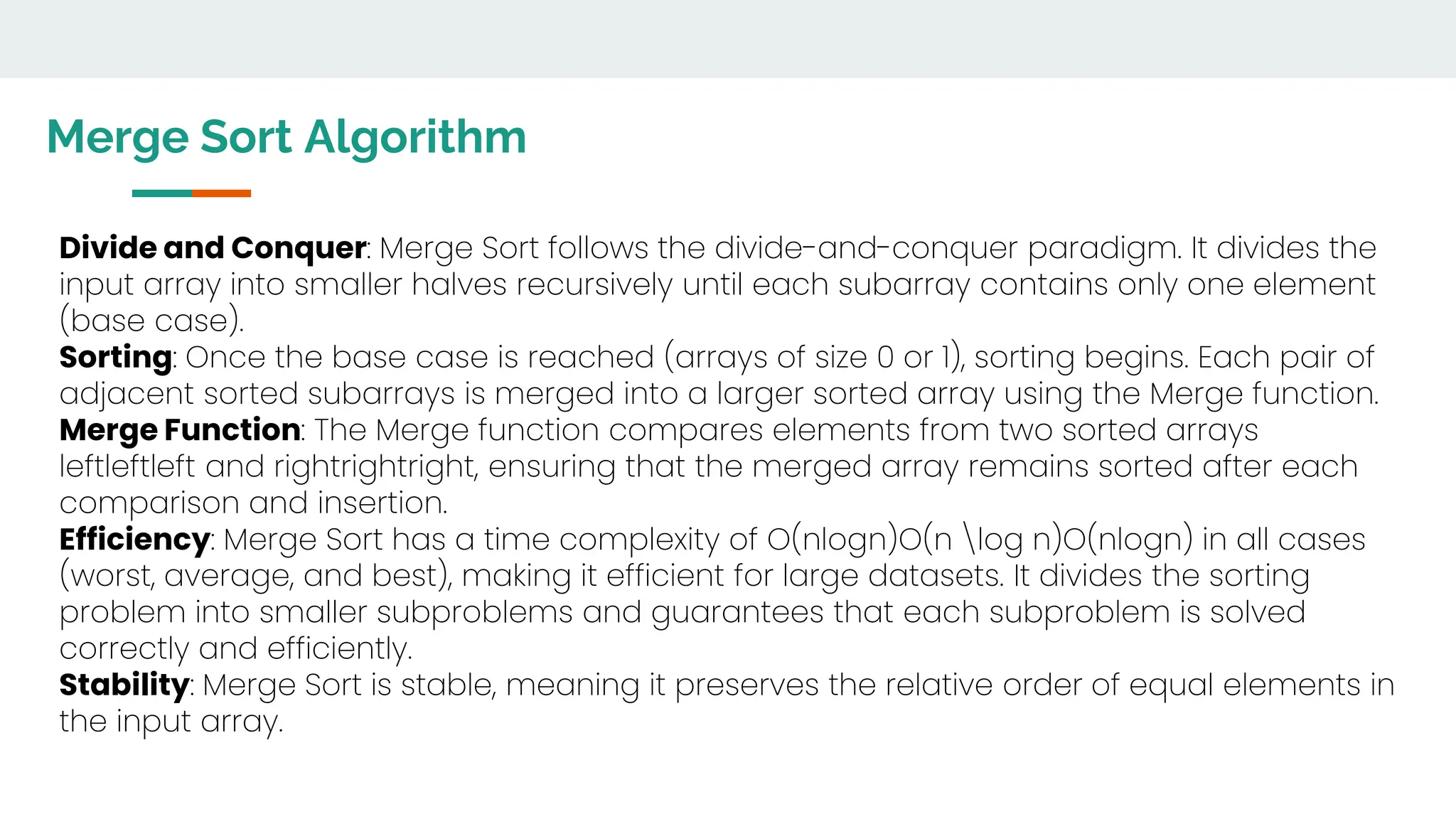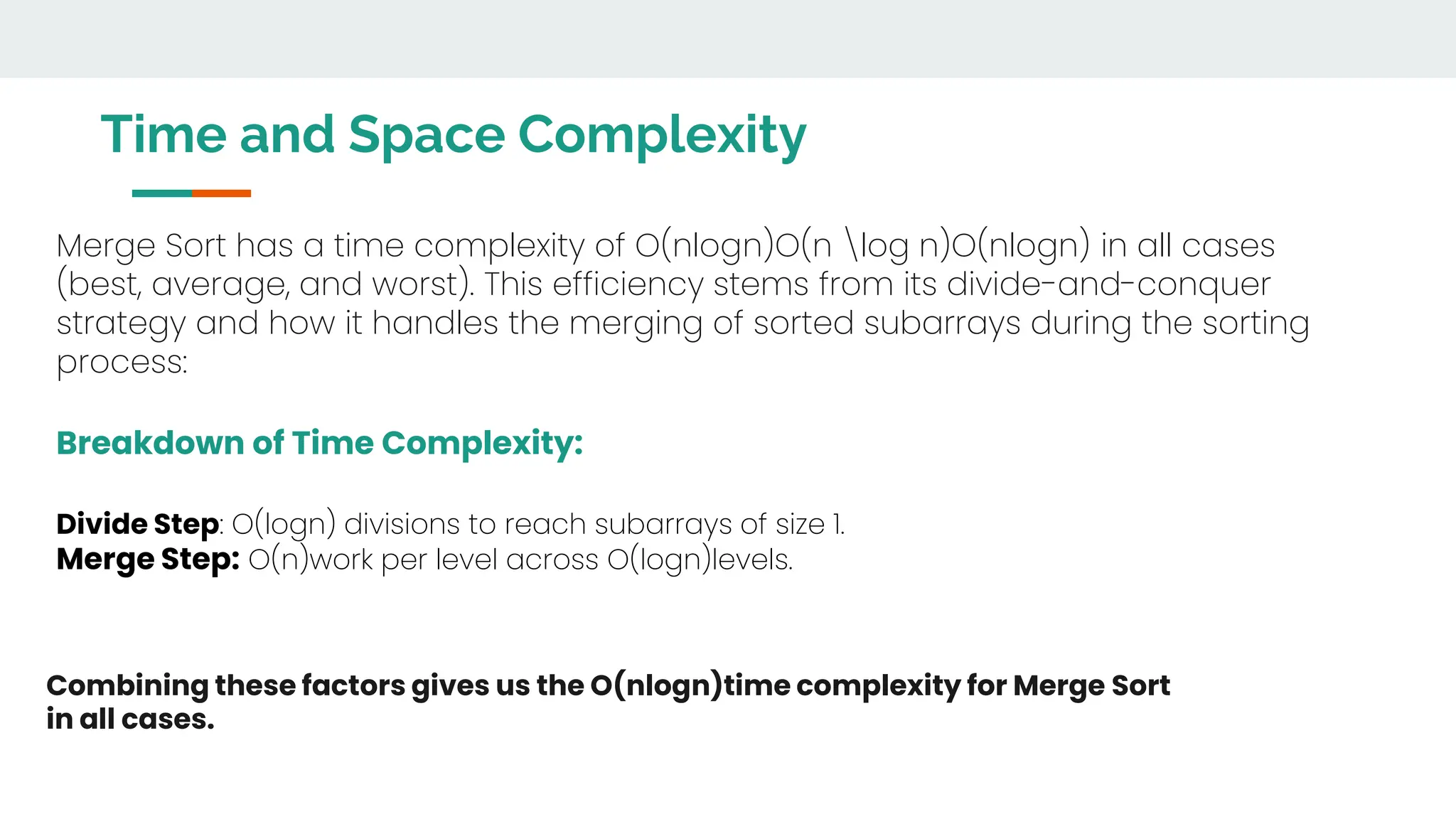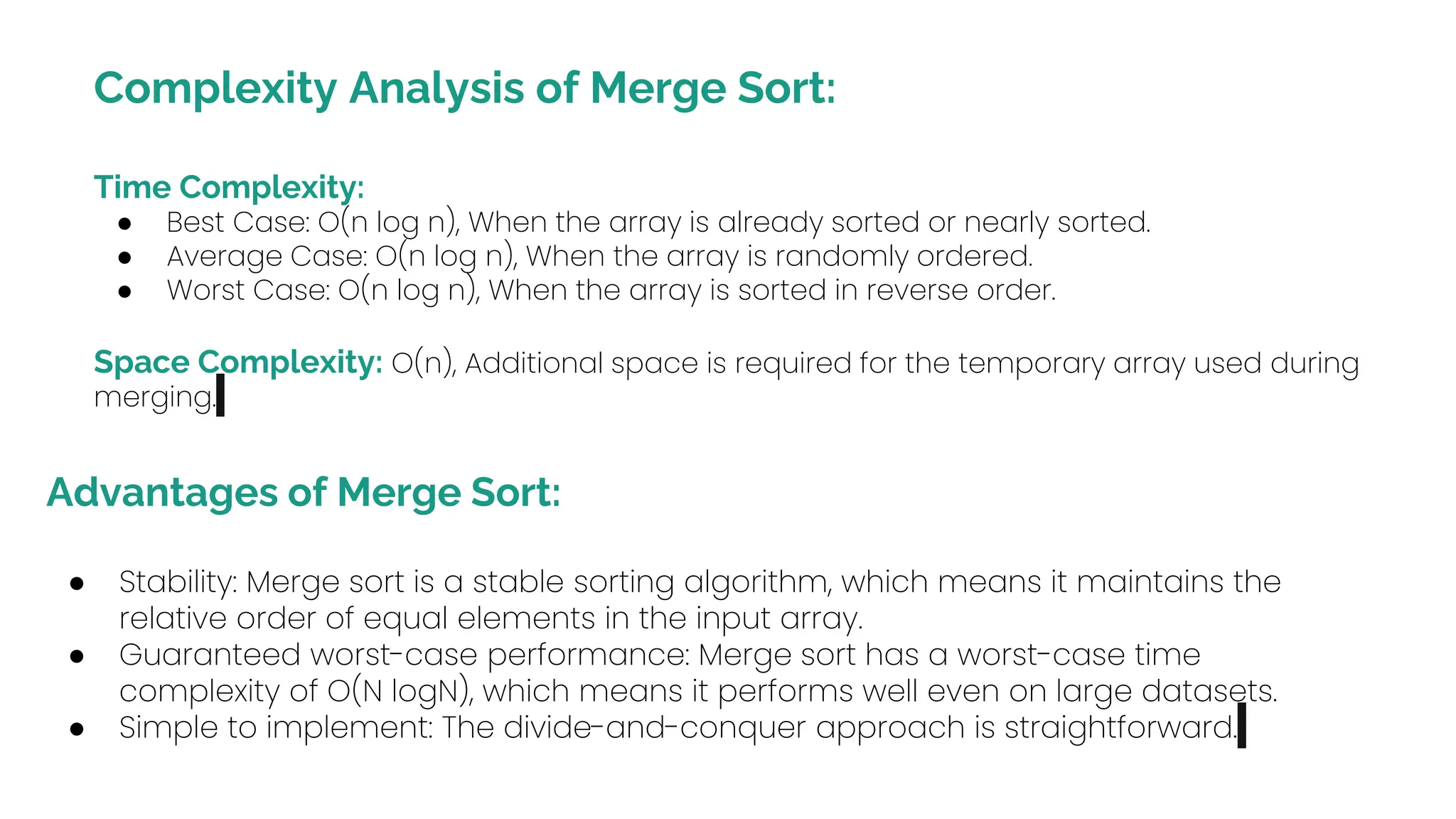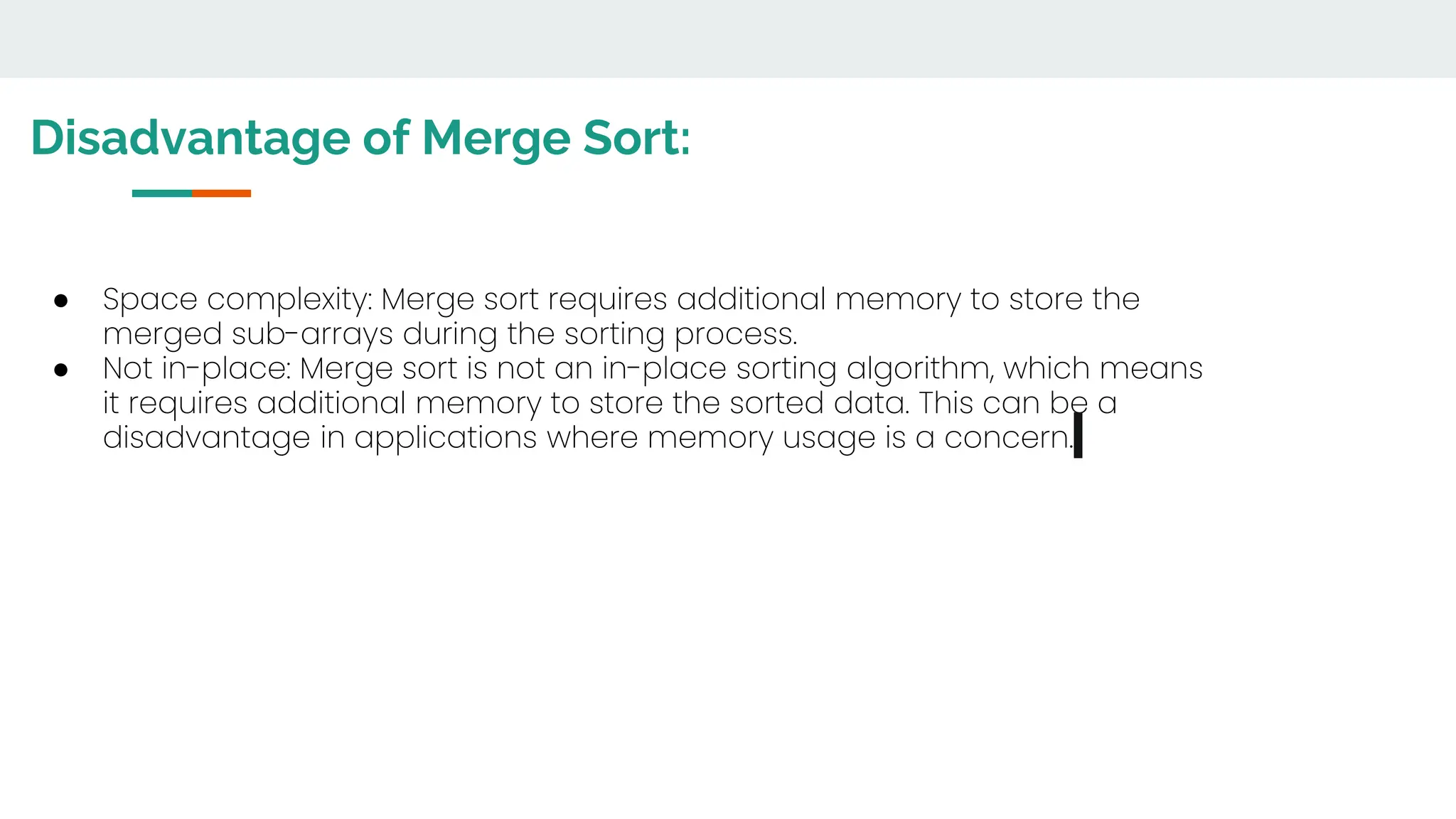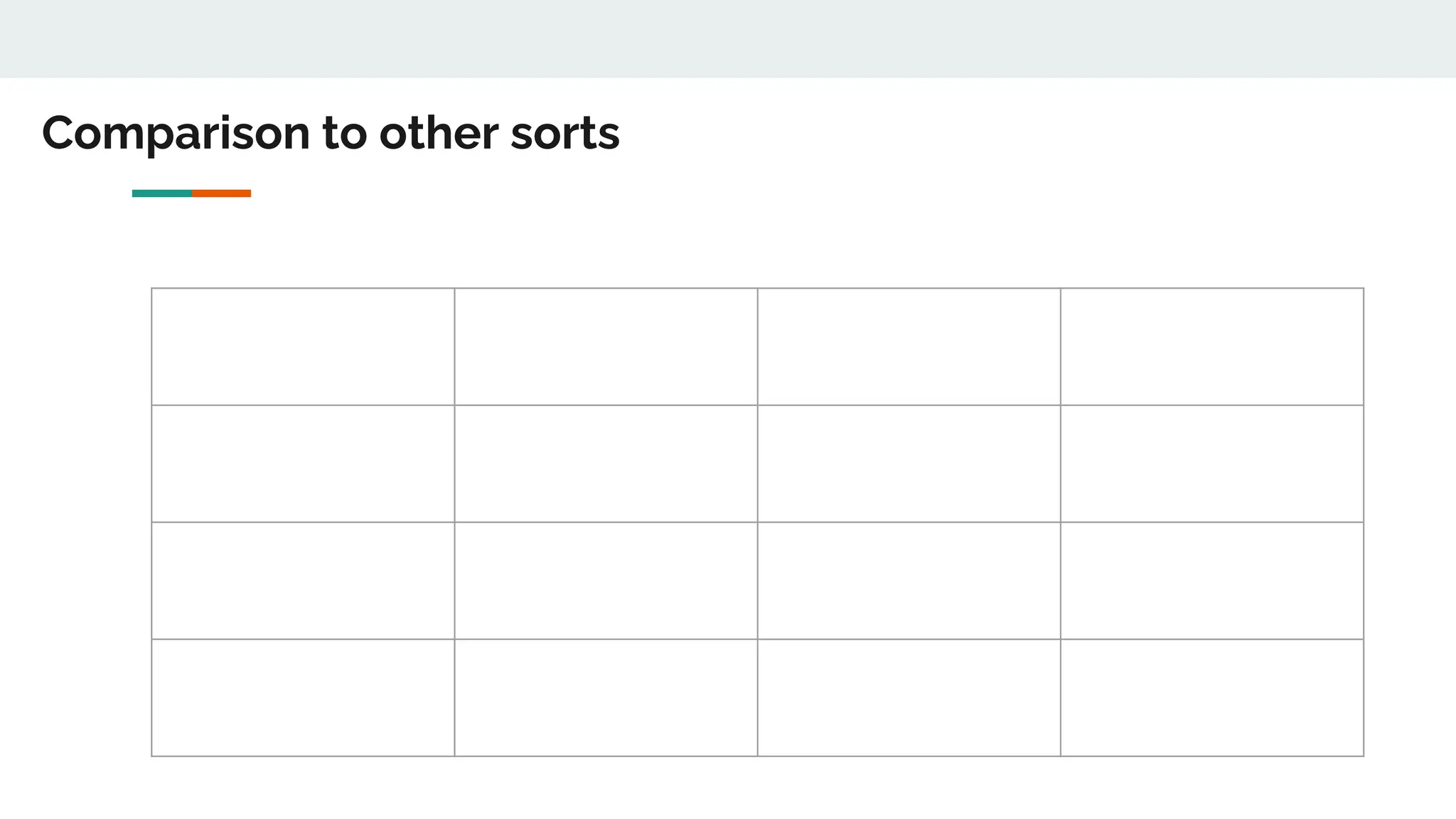Merge sort is a divide-and-conquer sorting algorithm with a time complexity of O(n log n), making it efficient for large datasets. It is stable, preserving the relative order of equal elements, and is foundational for understanding more complex algorithms. Though simple to implement, it requires additional memory and is not an in-place sorting method.

